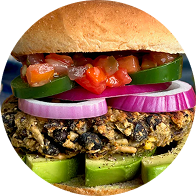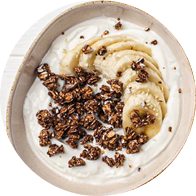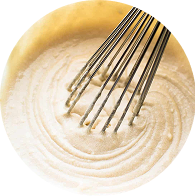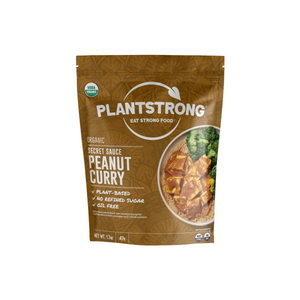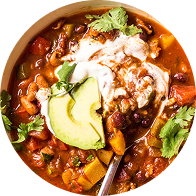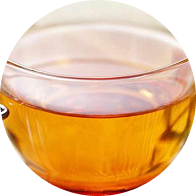10 Essential Tips for Beginners Starting WFPBNO Diet
The Whole Food Plant-Based No Oil (WFPBNO) diet is a type of diet that focuses on consuming whole, unprocessed plant foods while completely eliminating or greatly reducing oil and all animal products from the food. This lifestyle has gained popularity due to its numerous health benefits, including weight loss, improved heart health, reduced risk of chronic diseases, managing type 2 diabetes, and increased energy levels.
What's more, individuals on a WFPBNO diet take more whole grains, legumes, fruits, vegetables, and nuts. As such, the WFPBNO diet provides useful and essential nutrients that are very good for optimal health. According to an EPIC-Oxford study involving ~37,875 individuals, vegans and vegetarians, including WFPBNO dieters, have lower BMIs on average compared to fish- and meat-eaters.
However, for beginners, transitioning to a WFPBNO diet can be challenging. You may face difficulties in finding suitable recipes, planning your meals, dealing with cravings, and ensuring balanced nutrition. But don't worry – help is here! In this article, we will discuss ten essential tips to help you successfully start and maintain a WFPBNO diet.
Educate Yourself
After you have decided to start a whole-food plant-based no-oil diet, it is important that you educate yourself properly. Understanding the principles and benefits of the WFPBNO diet is crucial. Read books, watch documentaries, and follow reputable websites and social media accounts dedicated to plant-based nutrition. PLANTSTRONG has lots of useful resources to help you get started. Remember, knowledge is power, and being well-informed will help you make better food choices.
Start Slow
Furthermore, transitioning to a WFPBNO diet doesn't have to happen overnight. Begin by gradually adding more whole plant foods to your meals. At the same time, you should slowly reduce processed foods, animal products, and oil. This approach allows your taste buds and digestive system to adapt. Thereby, making the change more sustainable. Try replacing one meal a day with a WFPBNO diet option, then progress to two meals, and finally, all your meals. This gradual shift makes the transition smoother and more sustainable.
Stock Your Pantry with WFPBNO Essentials
A well-stocked pantry is crucial for success on a WFPBNO diet. Fill your kitchen with whole grains (like brown rice, quinoa, and oats), legumes (beans, lentils, and chickpeas), nuts, seeds, and dried fruits. Keep a variety of fresh fruits and vegetables on hand. Having these essentials readily available makes it easier to prepare healthy meals and resist the temptation of processed foods. You may also get some new spices and herbs to add flavor to your dishes without relying on oil or salt.
Plan Your Meals
However, proper meal planning is important to follow a WFPBNO diet. Take some time each week to plan your meals and snacks. This helps ensure you have a variety of nutrients in your diet and prevents last-minute unhealthy food choices. Prepare larger batches of staples like grains and legumes to use throughout the week. You should also add a mix of raw and cooked foods for optimal nutrition and satisfaction.
Learn Oil-Free Cooking Techniques
Cooking without oil may seem very difficult at first. Thankfully, there are many effective alternatives. Try water sautéing or using vegetable broth. When baking, replace oil with mashed banana, applesauce, or plant-based yogurt. These techniques and alternatives will eliminate unnecessary fats and also allow the natural flavors of your ingredients to shine through.
Focus on Nutrients
While a WFPBNO diet is very nutritious, it's important (for all adults) to ensure you're getting all the necessary nutrients. Pay special attention to vitamin B12, vitamin D, omega-3 fatty acids, and iron. Consider taking a B12 supplement, as this nutrient is not naturally found in our food supply. Include foods rich in omega-3s like flaxseeds, chia seeds, and walnuts. Also, add iron-rich and calcium-rich plant foods like leafy greens, fortified plant milk, and tofu to your meals.
Stay Hydrated
Additionally, proper hydration is crucial in any diet. In fact, it's even more important when transitioning to a WFPBNO lifestyle. As you increase your fiber intake from whole plant foods, you'll need more water to help with digestion. Start your day with a large glass of water and aim for at least eight glasses of water daily. You can also take herbal teas and infused water to add variety to your fluid intake.
Be Prepared for Social Situations
However, social gatherings and dining out can be challenging when following a WFPBNO diet. Hence, you may need to plan ahead by eating a small meal before attending events where food options might be limited. Also, you can check menus in advance when dining out. You can also ask the restaurant to make your dishes oil-free.
Experiment with New Recipes
Keeping your meals exciting and varied is key to sticking with a WFPBNO diet long-term. Explore new recipes and foods to discover delicious plant-based dishes. Try international cuisines like Indian, Mediterranean, or Mexican, which often feature plant-based meals. You can also invest in a good WFPBNO cookbook or follow plant-based food bloggers for inspiration.
Listen to Your Body
As you transition to a WFPBNO diet, pay attention to how your body feels. You may experience some initial changes in digestion or energy levels as your body adjusts. This is normal and usually temporary. Notice how different foods affect your energy, mood, and overall well-being. If you have any concerns or persistent issues, consult with a healthcare professional or a registered dietitian who knows about plant-based nutrition.
BONUS: Find Support
Starting a new dietary journey can feel isolating at times. Hence, you should get support by joining online communities or local groups of people who follow a WFPBNO diet or lifestyle. Sharing your experiences, recipes, challenges, and tips with others can help motivate and support you. Thus, making your journey more enjoyable and easier.
Final Thoughts
Adopting a Whole Food Plant-Based No Oil diet is a journey that offers several health benefits and can be very rewarding. Although, the transition may present some challenges. Nonetheless, the insightful tips provided in this article can help make it smoother and more enjoyable. Remember to be patient with yourself, celebrate small victories, and focus on the positive changes you're making for your health. Above all, your decision to opt for a WFPBNO diet is an incredible and healthy one that your body and the planet will thank you for.



